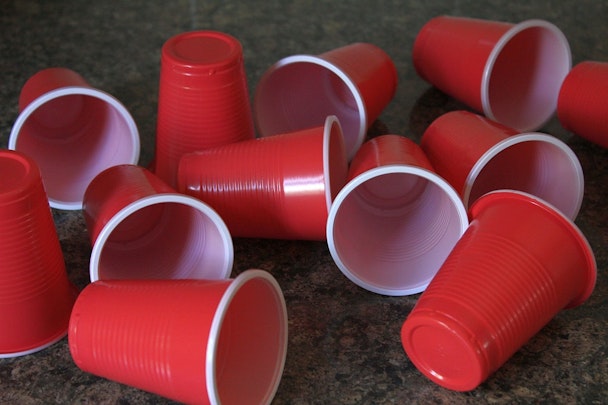It’s up to brands – not consumers – to tackle sustainability apathy in the US
Recycling company TerraCycle shook up the consumer packaging industry when it launched its innovative ‘circular shopping’ scheme, Loop, at the World Economic Forum in January.

It’s since been rolling out in different markets, the latest being the US. The country’s poor recycling track record makes it a prime target for the Loop initiative.
But many commentators are asking if consumers in the States are ready for such forward-thinking recycling innovation.
Do they even care about sustainability?
The numbers would suggest they do not. Currently the US only recycles 9% of its plastic, compared to 39% plastic recycling rate across the EU and 22% in China. The rest is either burned or sent to landfill.
This is quite shocking. But even if American consumers did want to recycle more, they would find they cannot: the sheer scale of the country and the lack of infrastructure often makes it impossible.
There also isn’t enough governmental pressure being applied to address this within corporations or in communities, with environmental messages being – at best – ambiguous under Trump.
This is in contrast to Europe where there is a whole ecosystem around sustainability that exists to change people’s behavior. It starts with government, which manifests into laws, corporate change and infrastructural developments that make it possible and convenient, which turn into social and cultural norms around recycling and sustainability.
An ecosystem like this means the act of recycling becomes the default mode. In the US at the moment, it’s easier to opt-out than opt-in because the ecosystem is not there yet.
This represents a huge opportunity for brands – especially those searching for a higher purpose – to take a lead. Brands need to take the responsibility out of consumers’ hands and make behavioral changes a by-product of the products and services that they offer.
Terracyle’s Loop does this by making it aspirational to choose the Häagen-Dazs ice-cream that arrives in a cool metal tin, or the toothpaste that comes in novel tablet-form, over traditional formats. The delivery system, meanwhile, brings consumers a new level of convenience.
New behaviours around sustainability are therefore the by-product of consuming new product formats that offer an aspirational choice and a real boost in convenience. The fact that they’re working with the likes of Proctor & Gamble, Unilever and Nestlé means they’re thinking of scale, too, as well as about the viability of actually providing consumers with a whole new way to shop that also happens to be sustainable.
Initiatives like this change and enrich the recycling ecosystem, making it easier to opt-in to sustainable behaviors than to opt-out.
In uncertain and fluctuating times, the brands that do what they say are the ones that succeed and grow. Brands that don’t do what they say, suffer. Most companies have sustainability woven into their brand purpose and messaging, but I’d question if they are doing enough to deliver on that at a consumer level.
It’s time to stop placing the onus on the consumer to change their behavior and for brands to truly start providing consumers with products and experiences based on their own sustainable principles.
In the case of the US, it’s too big a market to ignore. And with sustainability being an increasing priority for investors and shareholders, leading the way isn’t just about being good. It’s about being commercially savvy and insuring your brand is fit for the future.
Jon Tipple is chief strategy officer, worldwide at FutureBrand
